52 Weeks of Historical How-To’s, Week 42: How to read minds!
“I’ll know thy thoughts.” – Othello, act iii. scene 3.
The Lighting the Past team has been working its way through the sizeable Reserve Collection of Shakespeare pamphlets and ephemera for some time. There was a moment where we thought we had finished cataloguing the whole collection, only to realise that the other half of the collection was stored somewhere else and we had many, many more Shakespeare pamphlets to catalogue…
We were working on this Shakespeare collection one day in July on what we then thought was our last box of pamphlets, Number 20, labelled: ‘Miscellaneous’. At the bottom of the box we noticed a small object. We lifted out the little paper envelope with its portrait of a rather debonair Shakespeare.
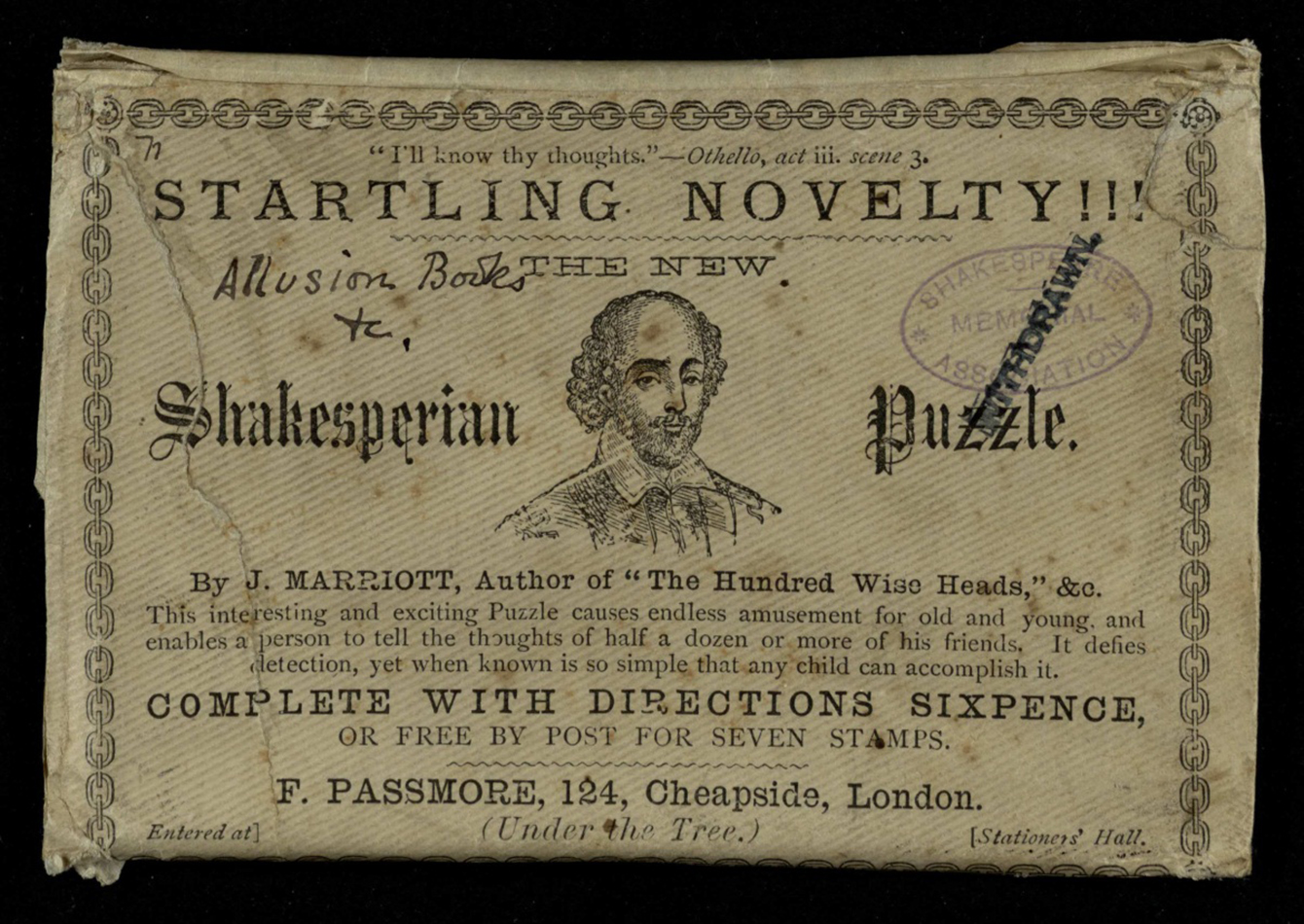
‘Startling Novelty!!!!’, declares the envelope. It contains a Shakespeare puzzle which promises to ‘enable a person to tell the thoughts of half a dozen or more of his friends’. We were intrigued!
The puzzle consists of a set of cards, each with a series of quotations in black on one side and in red on the other. The idea of the game is for the player to invite a friend to choose a sentence on one of the cards and then for the player to ‘read their mind’, by stating the exact Shakespearean quote their friend has chosen.

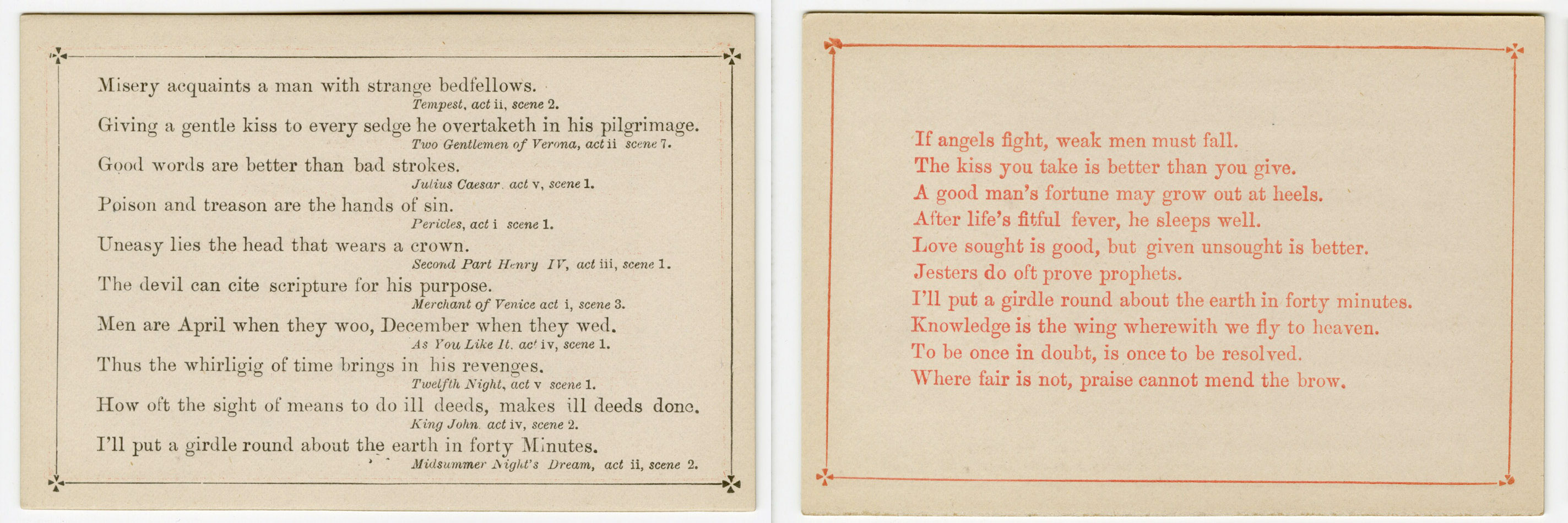
Our copy of The new Shakesperian puzzle is itself a bit of a mystery. It is a London edition, published by an ‘F. Passmore’ who appears to have been a stationer and novelty-item seller in Cheapside. Various references to the puzzle in 1890s newspapers indicate that it was probably produced and sold in that decade. It seems to be a later edition of an 1880 puzzle which was published in New York by Robert Gair, an Edinburgh-born printer who invented the pre-folded cardboard box and founded a Manhattan ‘paper empire’.
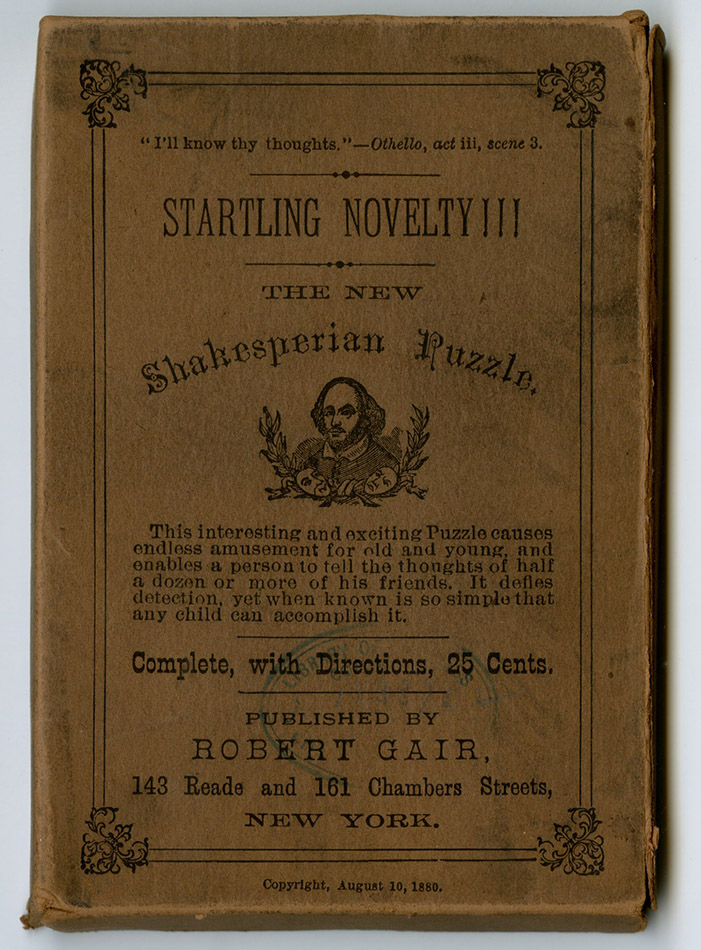
The Lilly Library at the University of Indiana has a copy of the New York edition of the puzzle. Both their edition and ours list the author as a ‘J. Marriott, author of “The Hundred Wise Heads” &c.’, however the content of the cards differs between editions. The Lilly Library’s puzzle is a complete 10-card set, but the St Andrews copy lacks one card. Luckily, only having 9 out of 10 cards doesn’t affect the reading of minds.
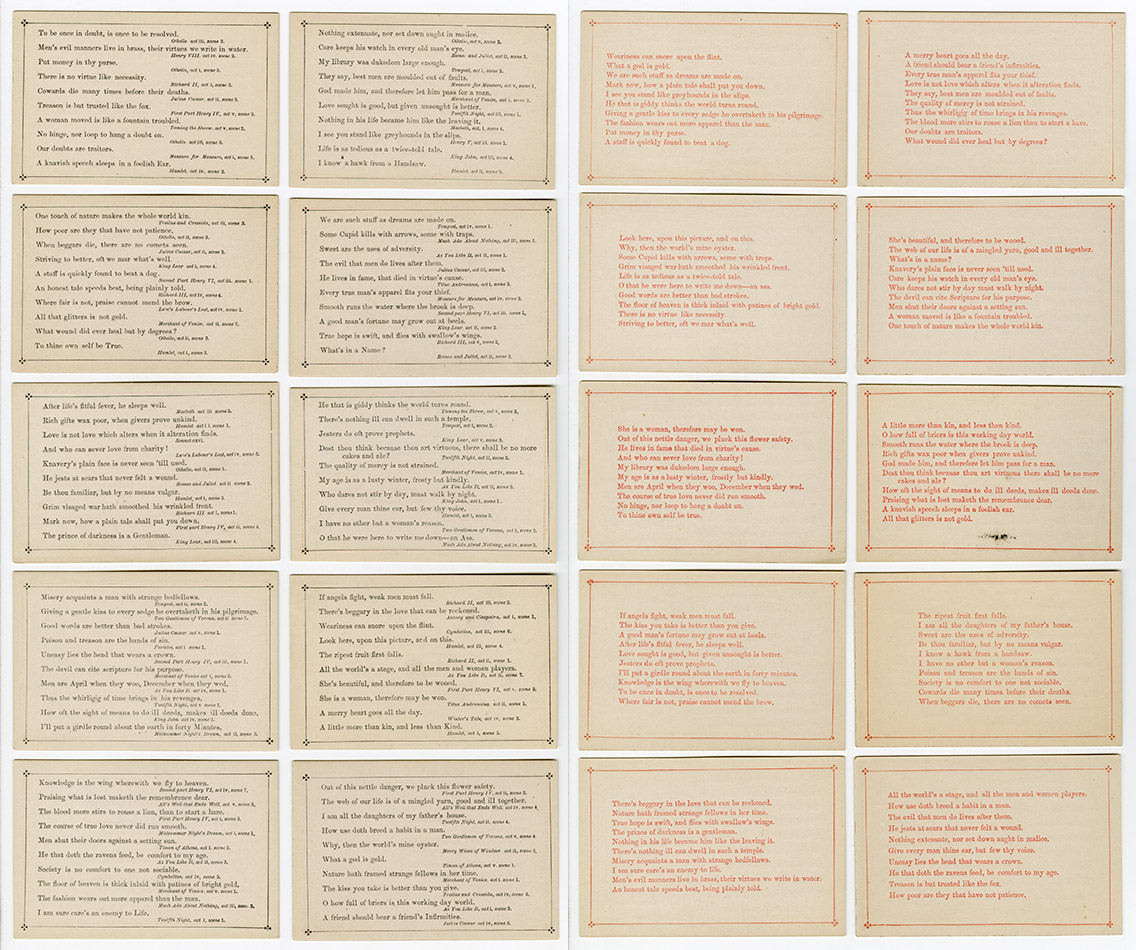
The envelope promises that, with the help of the directions, reading minds is ‘so simple that any child can accomplish it’, so we thought we would have a go.
To ease the work of the amateur psychic, the game’s creator arranged their Shakespearian quotations based on a simple key. The last line on the black side of each card holds the secret to the puzzle. A player may unlock the ability to miraculously read minds by noting the first letter of the last word of these lines.
The key to the puzzle is:
| K | I | N | G | H | A | M | L | E | T | |
| 1 | 2 | 3 | 4 | 5 | 6 | 7 | 8 | 9 | 10 |
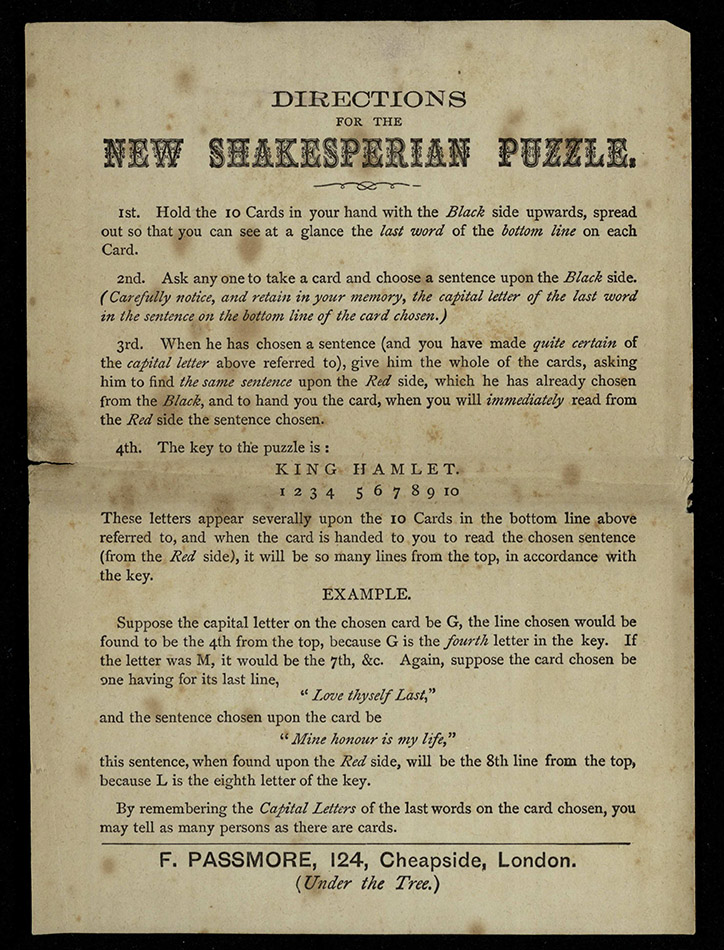
This key governs the placement of quotations on the red side. Exactly one line from each of the black sets appears on any given red card. Every seemingly random grouping of these lines follows the “King Hamlet” rule, such that any line from the “K” black card will be the first quotation on any given red card, any line from the “I” black card the second quotation on the red card, and so on. It is perhaps best to illustrate with an example, as the makers of the deck did.

Say Jamie picks “Be thou familiar, but by no means vulgar” (from Polonius’ injunction to Laertes before the latter’s departure in Act 1 of Hamlet).
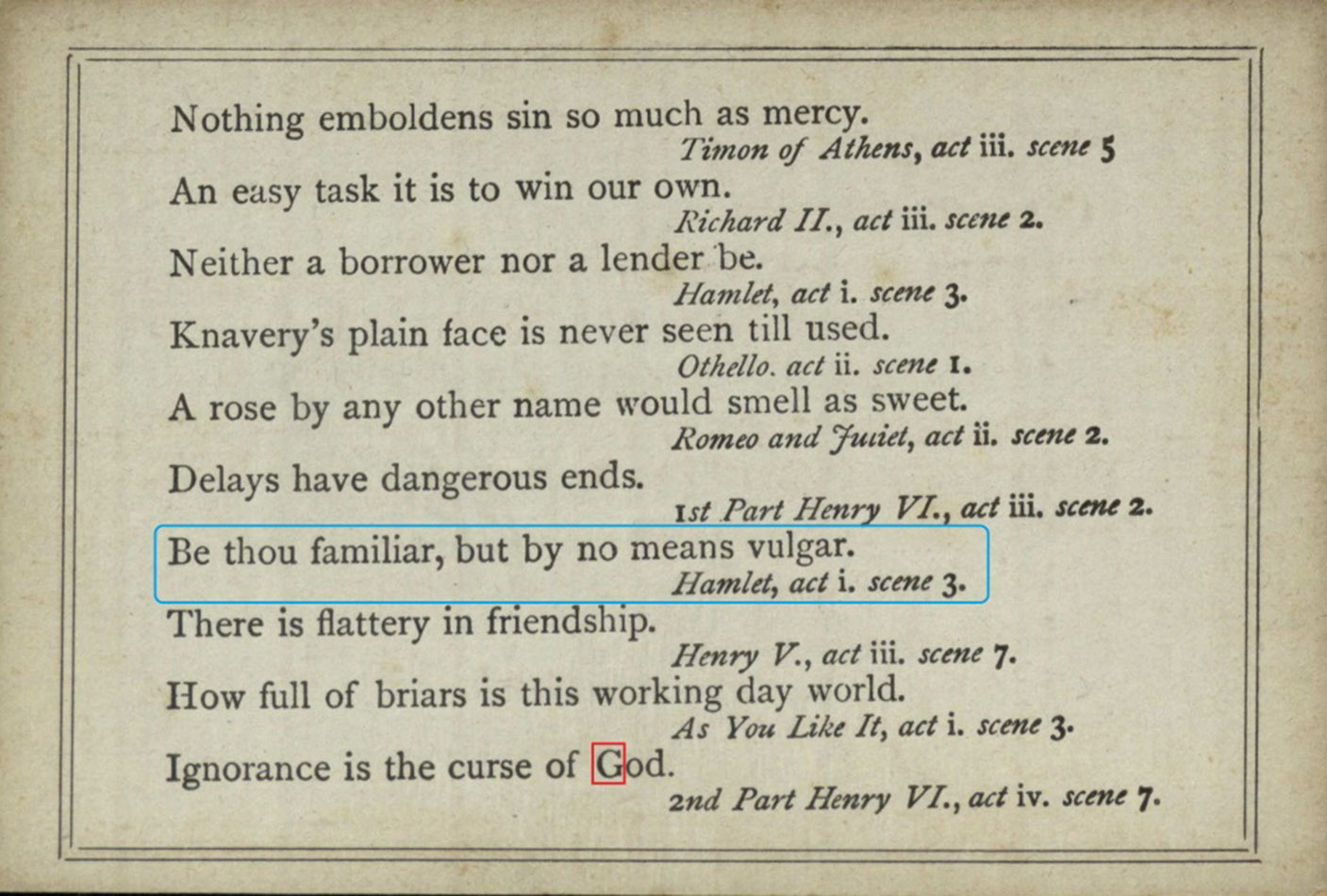
This line appears on the “G” card, so labelled because the first letter of the last word on the last line of the black side is “G”. Jamie then finds her line again on red side of the cards. Without telling Hannah which line she has picked, she hands her the red card. Hannah will now ‘read her mind’ because she knows that all “G” card lines are fourth from the top on the red cards (remember, “G” is the fourth letter of “King Hamlet”!).
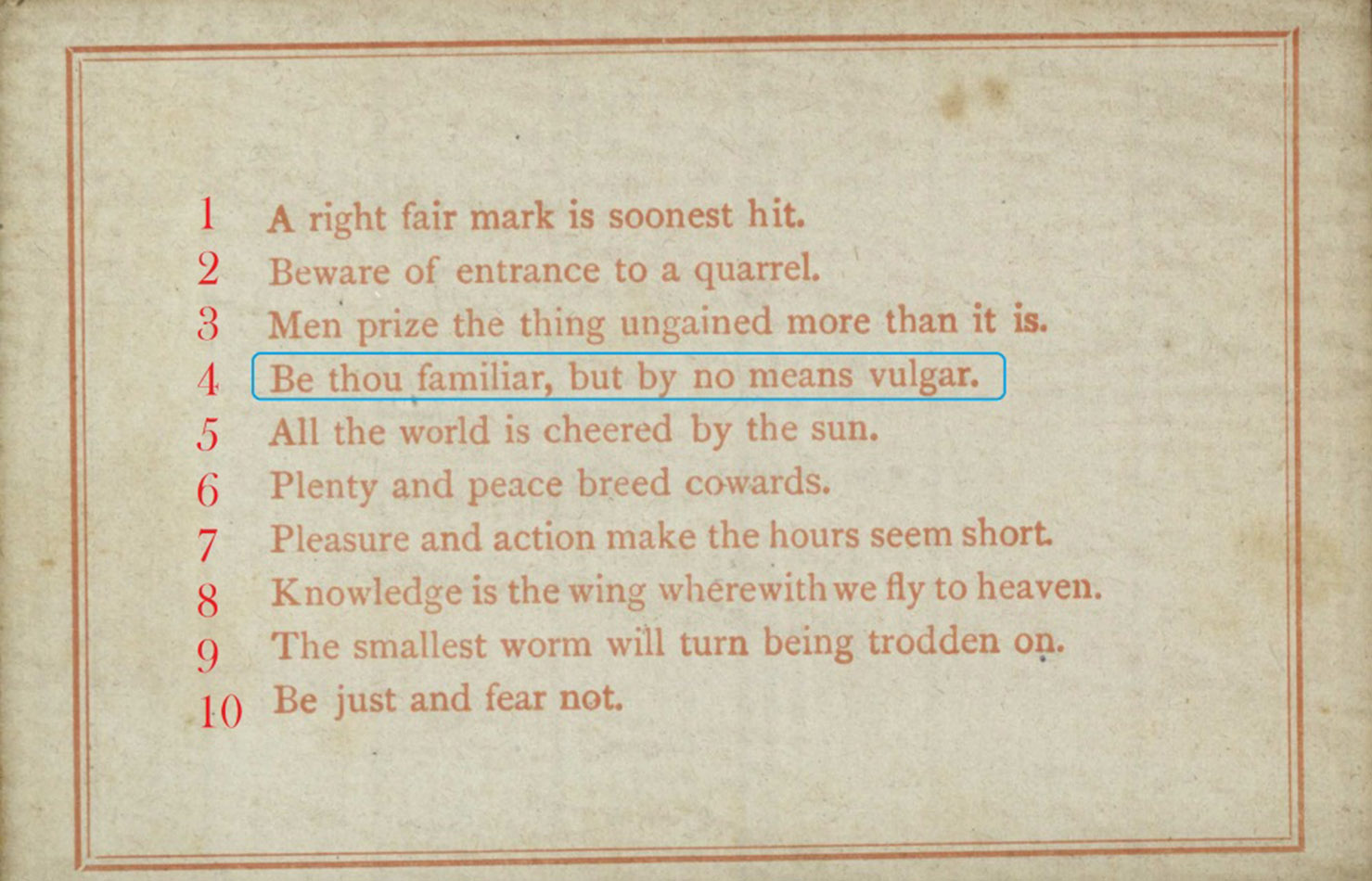
Sharp readers will note a problem – “King Hamlet” has ten letters, and the deck in our collection only has nine cards.
The “E” card is the missing card from our set. We could have figured this out following the simple principle behind the game. In the key “E” corresponds to “9”, so we should have realized that the ninth line on each of the existing red cards corresponds to the black side of the missing card. Just as “Be thou familiar, but by no means vulgar” comes fourth on the red side by virtue of being on the black “G” card, so would any “E” lines be ninth.
Instead of using this trick, we spent roughly an hour scanning back and forth between red and black sides to mark off matches. If a line appeared only once, we could infer that its mate was on the absent card.
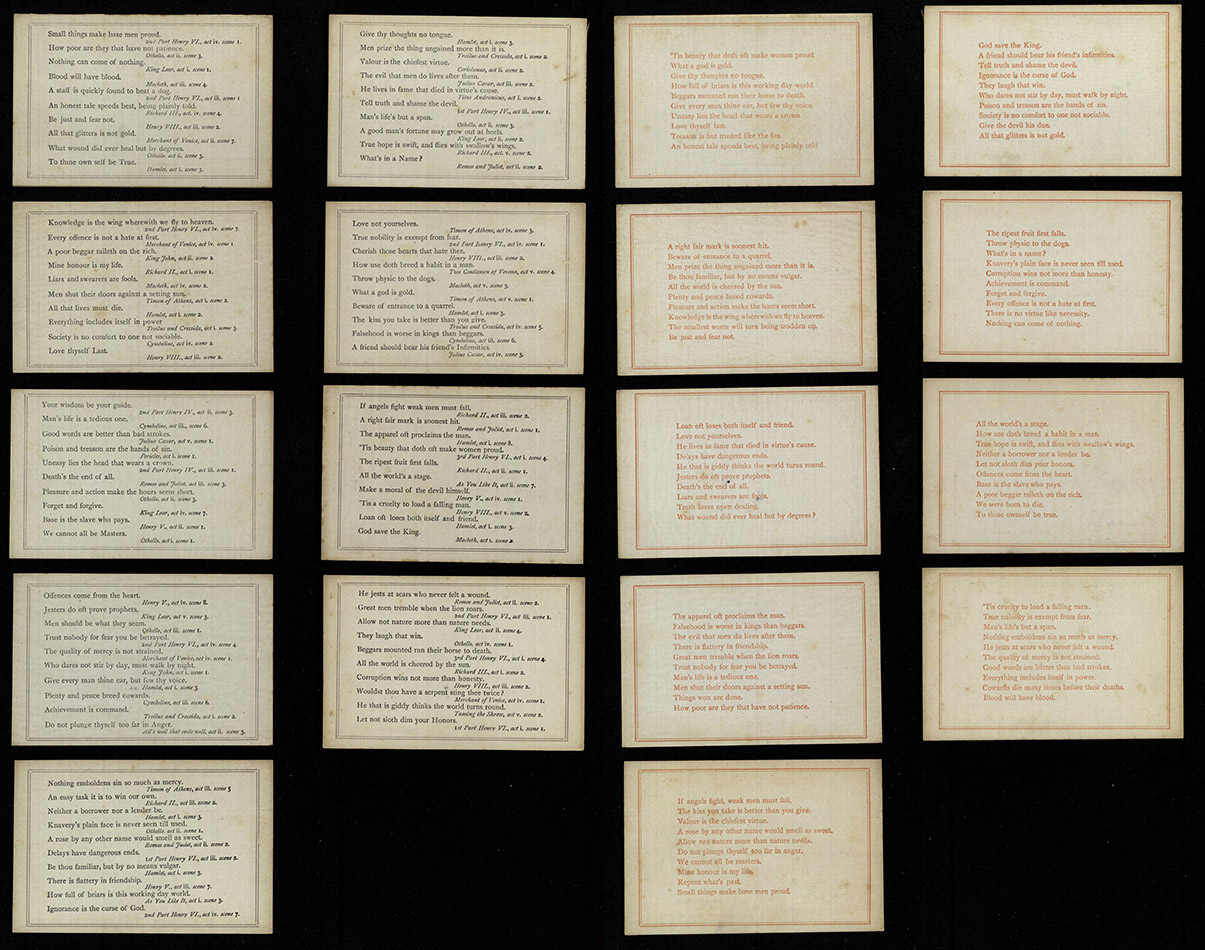
While our “process of elimination” method certainly worked, perhaps it should be taken as further evidence that we need a little help in the mind reading department!
Regardless of how we came to identify the lines, we still had to use the game’s principles to reconstruct their order. For the black side, there was little we could do. We knew that the last word of the last line had to begin with “E”, but none of the lines we identified from the red side matched that description.
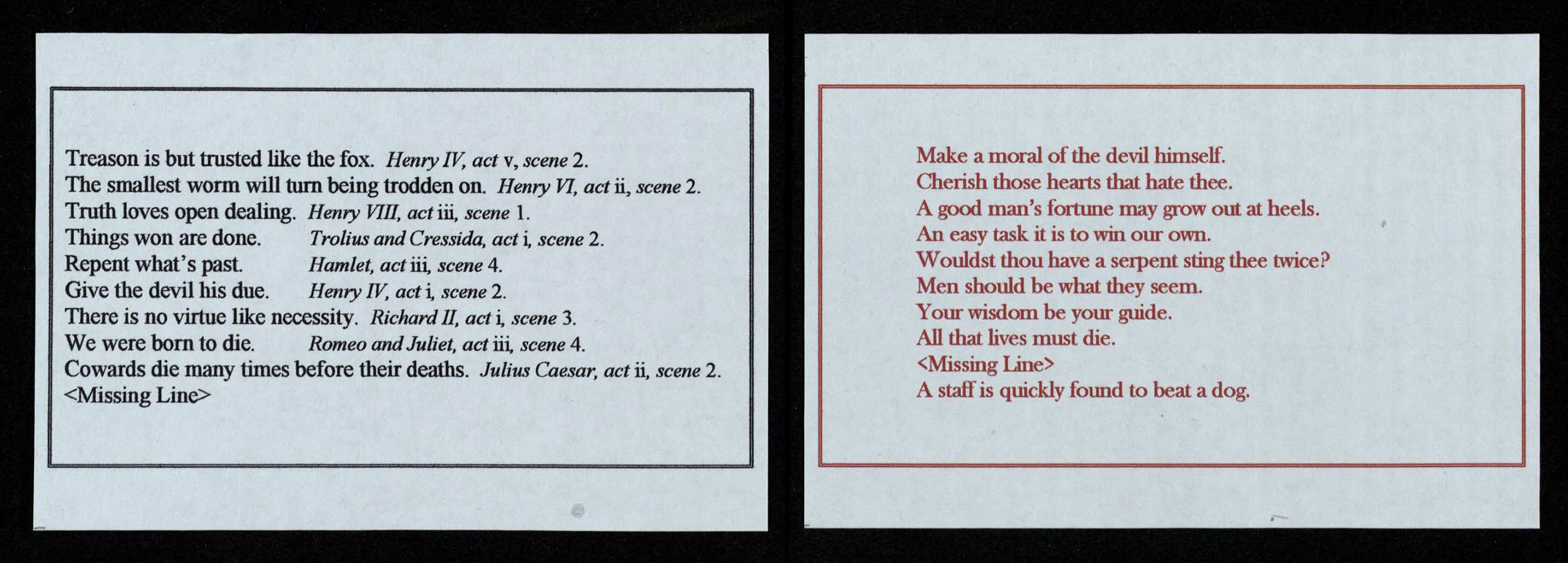
Exactly one quote must be repeated on both sides of each card, and the line exclusive to our missing card is the one with the critical final “E” – the only line on the black side of the cards that needs to have a specific place in order for the game to work. Although this tenth sentence with the capital E is, strictly speaking, necessary for the game to work, we can still play without it, as we know any sentence from this card will be the ninth.

The red side was much easier to recreate. Knowing the matchless lines on the black sides of the cards, we used the “King Hamlet” rule to place them. So the quote “An easy task it is to win our own” appears on the “G” card, meaning it had to be fourth on the red side of our missing card, and so on for the rest of the deck.
With the reconstructed ‘E’ card in hand, we set out to unleash our astonishing powers of telepathy on an obliging colleague!
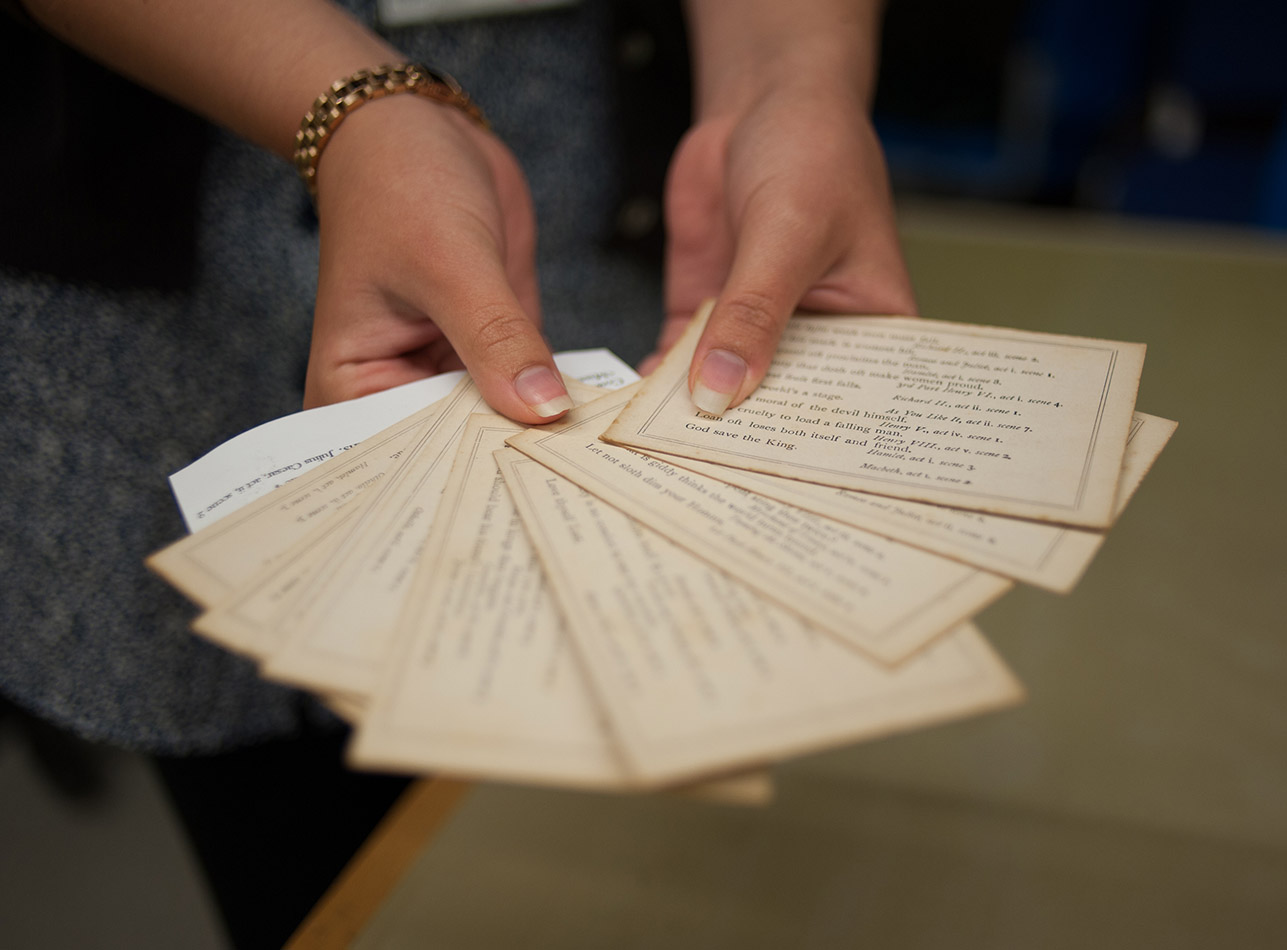
In mere moments, we were able to lift the chosen line, “They laugh that win” straight from Trevor’s mind! Amazing!
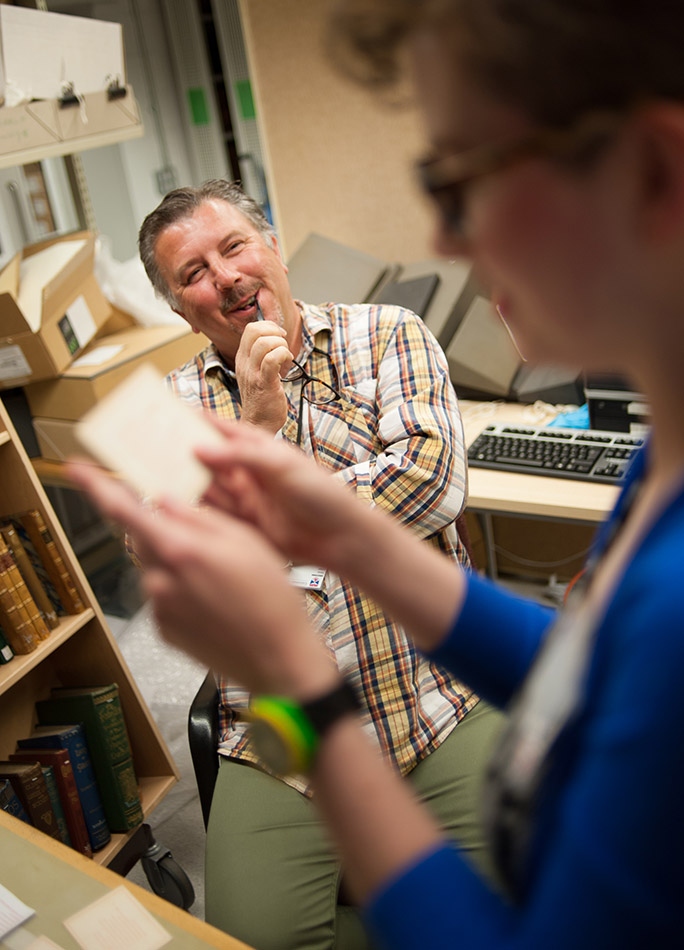
The Shakespeare puzzle was a fun discovery and we have very much enjoyed trying our mind-reading skills on unsuspecting victims! It would be easy to create your own version of the puzzle with quotes from any of your favourite works.
Hannah McInnes-Dean and Jamie Cumby
Phase 1 Cataloguers
Reblogged this on First Night History.
Reblogged this on Burns & Co. Blog.
[…] items. Typifying how LtP worked together as a team, some blogs were co-authored, such as that on how to read minds, and another on a 16th-century sammelband. In April 2016 residents and visitors to St Andrews had […]